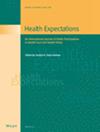Medicinal Cannabis and Consumer Vulnerability in Australia: A Nexus of Policy and Market Factors
Abstract
Introduction
Following the 2016 legalization of medicinal cannabis (MC) in Australia, significant barriers have led patients to seek unregulated cannabis for therapeutic use. This study examines consumer (patient, carer and family) submissions to a senate inquiry on these barriers to understand how future policy might better reflect patient needs and facilitate access to regulated MC.
Methods
Sixty submissions from patients (n = 44), their caregivers or family members (n = 16) were coded using NVivo 12 software and thematically analysed. The findings were presented narratively using a consumer vulnerability framework.
Results
The analysis identified three primary barriers to accessing regulated MC: (1) Health practitioners' reluctance to prescribe MC, hindering prescription access, (2) High costs associated with MC and its access process, disproportionately affecting low-income consumers and (3) Dependence on imported MC products, leading to shortages and necessitating product substitutions that incur additional costs and bureaucratic hurdles. Despite these barriers, consumers demonstrated resilience by educating themselves about MC, planning for prescription needs and forming support networks. Patients also turned to illicit MC markets.
Conclusion
The study reveals significant barriers to regulated MC access in Australia, highlighting the complex challenges consumers face. The reliance on unregulated sources of MC not only poses legal and health risks but also underscores the urgent need for policy reforms. By addressing the identified barriers, such as alleviating the costs associated with MC and improving approval processes and ensuring product availability, policymakers can better meet consumer needs and facilitate safer access to regulated MC.
Patient or Public Contribution
The materials of this document analysis were patient and public submissions to a government enquiry into barriers to a health technology. By providing submissions, both patients and the public were actively engaging in the development of health policy.


 求助内容:
求助内容: 应助结果提醒方式:
应助结果提醒方式:


